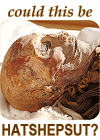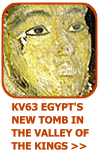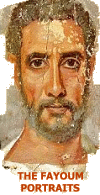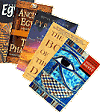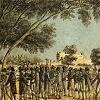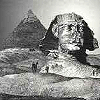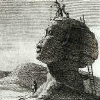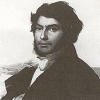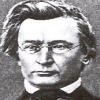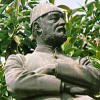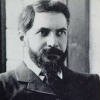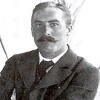|
|
|||||||||||||||||||||||
|
|
Topics in this section: egyptology-how it all began | great discoveries | great egyptologists | rosetta stone The civilisation of Ancient Egypt was already revered by the time that the Greek historian Herodotus (c.484-420 BC) compiled the first general account of the culture as a whole. It was also of considerable interest to Arabic scholars of the middle ages. Many early accounts mixed observation with fantasy, but some show genuine curiosity about the names and histories of the builders of the great pharaonic monuments. It was the mysterious hieroglyphs in the tombs and temples that attracted the attention of European scholars, such as the German priest Athanasius Kircher, who undertook important research into Coptic and Arabic manuscripts before turning his attention to hieroglyphs. Unfortunately, he believed them to be purely symbolic and non-phonetic, which led him to extreme and far fetched interpretations of the texts. The arrival of the Europeans
Their task was to record all aspects of Egypt's flora, fauna and history, the results of which were published between 1809 and 1822 as the 24 volume "Description de l'Egypt". Napoleon's expedition was bought to an end by the arrival of the British, but the French scholars were allowed to continue their work until 1802.
A fashionable new pastime ... Inevitably, Egypt and it's fabulous antiquities became "fashionable" with European travellers and collectors in the 19th century.
The first comprehensive and reliable work regarding the Egyptian antiquities in English was by Sir John Gardner Wilkinson (1797-1875). His three volumes of "Manners and customs of the Ancient Egyptians" was published in 1837 after twelve years of continuous fieldwork in Egypt and Nubia, and earned him a knighthood in 1839. The "scientific" expeditions unfortunately took place against a backdrop of looting and "collecting" by such "pioneers" as Bernadion Drovetti and Giovani Belzoni. The treasures and antiquities "acquired" by these men went on to form the basis of the collections at the British Museum, the Louvre, the Berlin Museum and the Museo Egizio, Turin. Analysis and preservation
From the 1890's onwards, the subject of Egyptology became progressively more professional as a result of the work of scholars such as William Matthew Flinders Petrie, who introduced and developed meticulous techniques of field recording and excavation. Petrie's techniques of excavation were vastly superior to that employed by most of his contemporaries. Above all, he was determined to preserve and record as much of the evidence as possible, rather than concentrating on objects that would command a good price on the art market.
Today, the Supreme Council for Antiquities is responsible for granting excavation permits to foreign missions, as well as co-ordinating their work in the best interests of the Egyptian people. The Supreme Council has also been involved in such projects as the Aswan High Dam in the 1960's, the Cairo waste water project in the 1980's and the el-Salaam canal in the Sinai in the 1990's. Learn more about the great discoveries in Egypt >>
|
||||||||||||||||||||||

|
|||||||||||||||||||||||
|
|||||||||||||||||||||||




